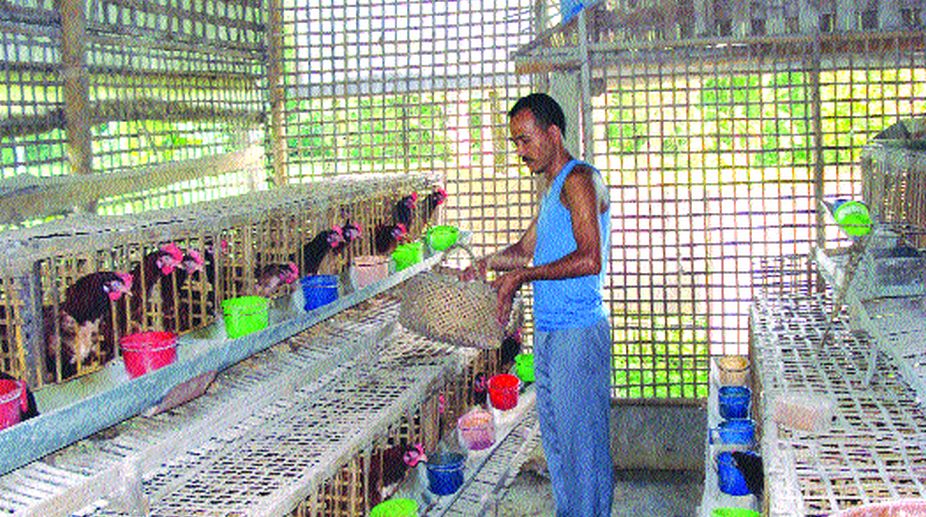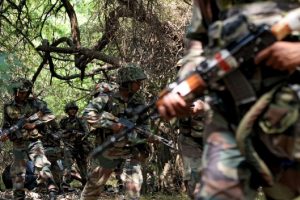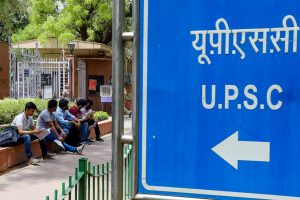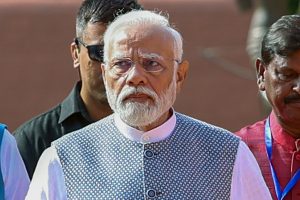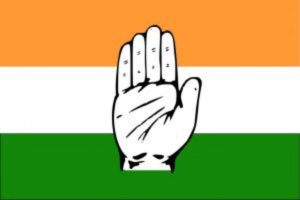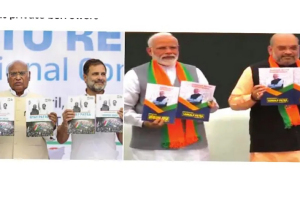The strategic significance of the extended definition of the North-east, which made Sikkim a part of the North Eastern Council, is that the region is now the only one in India that shares land borders with five countries. And yet, interest in developments in Nepal has always been limited with little media coverage.
Even in the 1990s when the Maoists launched the Peoples’ War in that country and installed a parallel power centre vis- a- vis the state in several parts, media and people in the North-east did not feel concerned about the possible impact of Maoism in the region.
This was in sharp contrast with the perception that prevailed in the wake of the Naxalite movement in the 1970s. It might be due to the anti-foreigners movement in the 1980s when migration from Nepal was seen as a part of the problem. However, indifference to Nepal now makes little geo-political sense because in the post- April 2015 earthquake scenario, new opportunities are emerging for India in which the North-east may have a mutually beneficial role to play. Such possibilities have been obscured in the fog of political uncertainty associated with Nepal’s unfinished task of forming a constitution capable of meeting the legitimate aspirations of its diverse population, which is divided into four broad ethno-cultural groups. These are upper caste-based in the hills and the valley, Janjatis meaning tribes in the hills and plains divided into 54 groups, Dalits and Madhesis comprising roughly 31 per cent, 30 per cent, nine per cent and 31 percent, respectively of Nepal’s population of 29 million people according to the 2016 estimates. However, there are some gaps in these estimates due to overlapping of identities.
The mind-boggling ethnic diversity of Nepal is seen from the fact that in only 15 out of 75 districts is there a single group that makes up more than 50 per cent of the population. This makes the task of delineation of legislative constituencies, reservation of seats and any system of decentralised governance extremely complex. Consequently the declaration the Maoists made when they joined the interim government in 2006 of wanting Nepal, even in the interim period, to become a democratic federal republic remained unfulfilled largely due to a lack of consensus in balancing the interests of ethnic groups in the distribution of political power in a democracy with federal features as worked out in the 2015 constitution.
Since Nepal was not under direct British rule, its institutions of governance were not influenced, as in India, by the British “common law”, systems and procedures. From the formation of the state in 1768 under the legendary King Prithvi Narayan Shah till the 1990 constitution, Nepal was an absolute monarchy without any basic feature of democracy such as the rule of law, bill of rights, duly elected legislature, independent judiciary and an apolitical civil service. And, power and privileges were cornered by the “hill upper caste elite” who held roughly two thirds of all positions in government while the land and other rights of subjects were unclear and discriminatory.
The Maoist insurgency was a violent protest against this “extractive” state. However, its promise of building an “inclusive” state has hit several road blocks of such magnitude that they prompted keen observers of Nepal like KV Rajan, who was the Indian envoy there, to feel that notwithstanding the 2015 Constitution and the decision of the government to go through the motions of elections to local bodies — scheduled in May this year — and provincial and national legislatures thereafter to be completed by January 2018, the election process is unlikely to succeed in the near future. The withdrawal of support of an alliance of Madhes-based political parties to Prime Minister Prachanda-led government on 15 March and the present Madhes agitation against holding of elections to local bodies — the first ever to be held in Nepal after 20 years — prove that Rajan’s assessment has been right.
Let us look at the Madhesi issue. There has been inaccurate reporting in the Indian media that the Madhesis are of Indian origin, far from it because the Terai area where they live was a part of the kingdom of Nepal since its inception in 1765.
The British allowed Nepal to retain this territory to ensure economic viability of Nepal and two districts in the far west, Kanchanpur and Kailali were returned to the monarchy for their loyalty after 1857.The Ranas like the zamindars of Assam’s Goalpara district actually encouraged farmers from neighbouring areas to move up to raise crops and thereby increase revenues of the state. Thus Madhes emerged as the base of Nepal’s agrarian economy and the main source of revenue. Also, all surface transport links to India passes through Madhes. Thus 50 per cent plus of Nepal’s GDP of $20.88 billion ($71.52billion in terms of purchasing power parity as per 2016 estimates) is derived from the Madhes region and the main segments of the industry and service sector of the economy operate in Madhes except tourism.
The economic future of Nepal critically depends on Madhes. In the present situation when democracy in South Asia is really a “numbers game”, the formation of seven provinces under the 2015 Constitution mixing hills and plains areas in a manner that would ensure permanent dominance of the “hill upper caste elite” in six provinces means cynical rejection of the core Madhesi demand of ethnicity-based constitution of provinces for ensuring due Madhesi representation in the national assembly and their majority status in two provinces in the Terai.
The demands are unlikely to be met soon as this will require a restructuring of the dispensation of political power in Nepal and a change in the outlook of the ruling elite, which calls itself Communist and democratic, and is yet unwilling to agree to a political arrangement based on regional autonomy and balanced development for peace and progress of Nepal.
The brighter side of Nepal is the small population and huge untapped hydro-power potential, estimated at 42,000 MW, and natural resources for rapid all-round growth of the economy. In 2014, the economy grew at six per cent and though disrupted in 2015 due to the earthquakes, it is picking up again mainly fuelled by post-earthquake reconstruction and increased remittances from expatriate Nepali citizens, which account for 31.7 per cent of the GDP — the highest proportion for any South Asian nation as over half a million Nepalis are presently working in countries outside South Asia.
Nepal has a strong co-operative sector and has embarked on a skill development programme and to promote medium, small and micro enterprises. There has been a rising demand for improved health care and higher education in engineering, medical and management, which cannot be locally made given the spatial distribution of Nepal’s population and easy access to such facilities in the Indian neighbourhood. That creates opportunities for West Bengal, Sikkim and other North-eastern states.
The latter has an advantage as it has a well spread out ethnic Nepali population, which must now be about two million, which is five per cent of the region’s population especially in Assam, Meghalaya, Manipur, Arunachal Pradesh and Nagaland.
In Assam, Nepalis introduced commercial dairy farming for which they were accorded recognition as “graziers” under the Assam Land Revenue Regulation 1886 and “professional grazing reserve” lands were set apart for their cattle in all Assam valley districts. Their role in the Assam Rifles, state police, forest resource-based activity and as skilled workforce in urban areas, have immensely contributed to transform the North-east in the modern period. Thus the time has come to recognise the ethnic Nepali not as the “other” but as a vital link to the emerging economy of Nepal with increased foreign investment and larger interaction with the neighbouring states of India and South-east Asia.
If the North-east could open its healthcare and education facilities to Nepal, the region could gain immensely from a research and development partnership with the Nepal-based International Center for Mountain Development. The region could also avail Nepal’s expertise in developing world class tourism industry for ushering in a new era of Nepal-North East economic and technological cooperation. And this will require a critical change of mindset in the North-east — looking to Nepal as a source of opportunity for mutual progress.
(THE WRITER IS A RETIRED IAS OFFICER OF THE ASSAM-MEGHALAYA CADRE AND HAS SERVED AS A SCIENTIFIC CONSULTANT IN THE OFFICE OF THE PRINCIPAL SCIENTIFIC ADVISOR TO THE GOVERNMENT OF INDIA)

